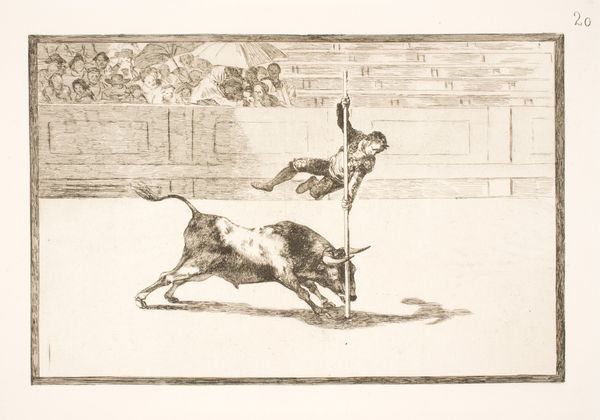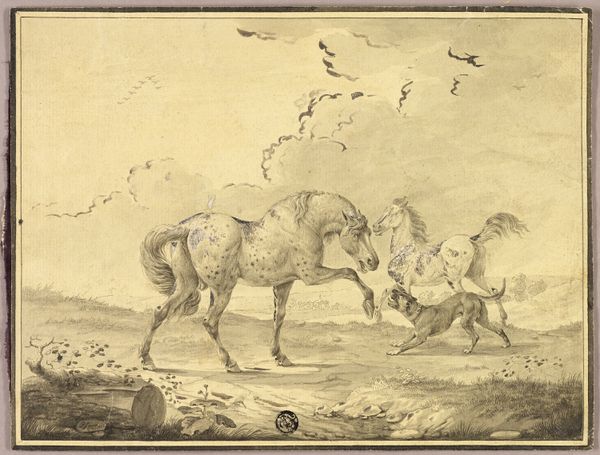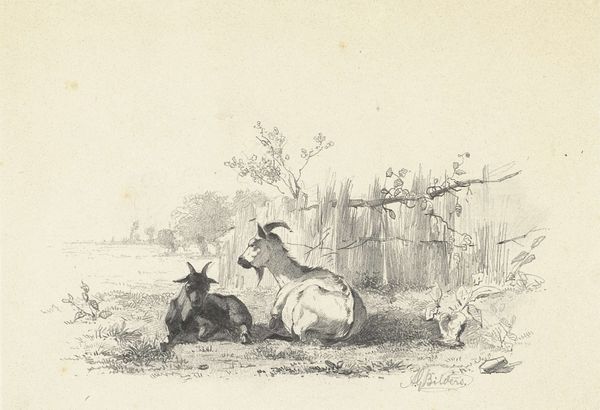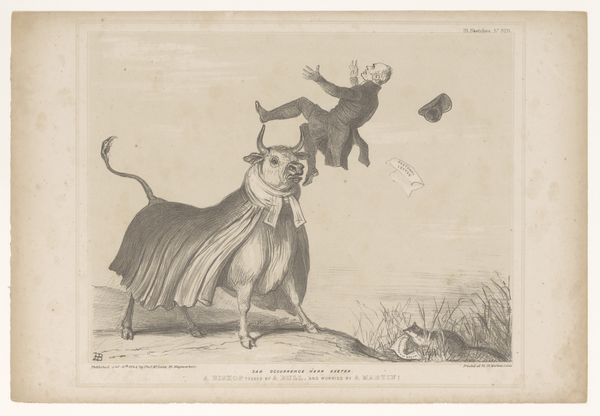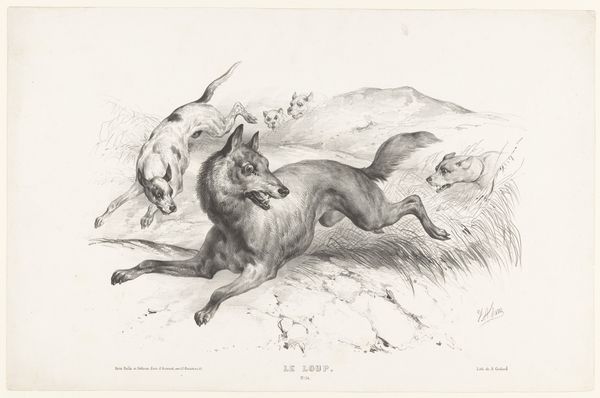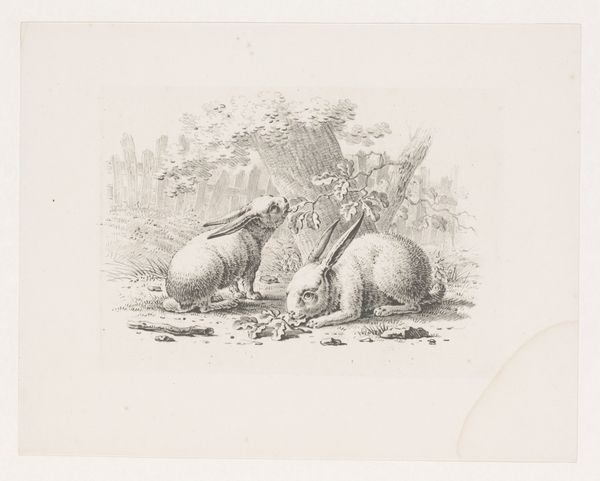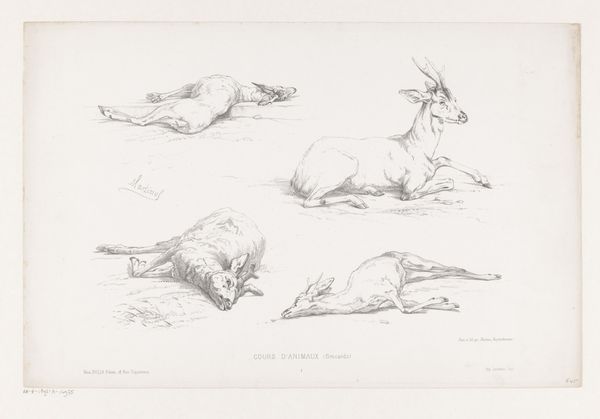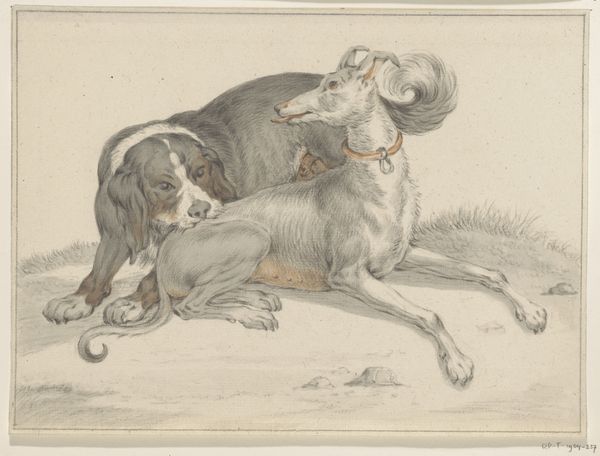
drawing, print, pencil
#
drawing
#
narrative-art
# print
#
dog
#
pencil
#
genre-painting
Dimensions: Sheet: 11 15/16 × 17 7/16 in. (30.3 × 44.3 cm)
Copyright: Public Domain
Curator: This is John Doyle's 1838 lithograph titled "Coursing Extraordinary," currently residing at the Metropolitan Museum of Art. It seems deceptively simple at first glance. Editor: Indeed. The initial impression is one of raw dynamism—the sinuous lines capture pure movement and tension in this animal pursuit. The starkness of the grayscale also strikes me; it is like frozen lightning. Curator: Well, it's a genre scene but executed with an… anthropomorphic twist, wouldn’t you say? I mean, let's consider what's depicted. The figures seem to satirize the conventions of 19th-century British society, especially the obsessive and brutal pastime of hunting. Doyle’s use of animal-human hybrids, for instance, feels deeply transgressive. Editor: I appreciate that socio-political reading, but can we stay with the formal qualities? Note the shallow depth of field. See how all the figures align on one horizontal plane? The dogs mirror one another compositionally; we even see figures of men in hats who follow in a distance. What do these pairings mean for a greater reading of balance? Curator: These details serve as a condemnation, of course. Placing human faces on those greyhounds mocks the hunter-pursuer dynamic itself; these men who enjoy chasing hares for pleasure become monstrous extensions of their dogs in a very real sense. Editor: Monstrous—yes, but consider also the detail of Doyle’s printwork. These subtle gradations create musculature, suggesting force through almost pure tonality! Note especially the light glinting on those faces… grotesque yet beautiful. Curator: Fair point—however, don’t forget this print implicates the historical legacy of empire and colonization, especially where landscape painting provided justifications for land use. Dogs chasing rabbits echoes violent historical conquest across multiple lands and centuries, even as this pastime appears trivial, innocuous. Editor: It appears trivial on first glance, perhaps. Yet through sharp focus, linear movement, the print evokes a sense of the uncanny, too. Perhaps, ultimately, it asks us not simply *what* but *how* we see? Curator: I’d say it questions *who* benefits from what is being seen... Doyle surely meant to stir viewers, and question the casual cruelty in so many of life's spectacles, however great or small. Editor: True. Doyle gives us a window into a specific time, yes, but its formal strategies ask bigger questions, ensuring “Coursing Extraordinary” holds power for decades to come.
Comments
No comments
Be the first to comment and join the conversation on the ultimate creative platform.

